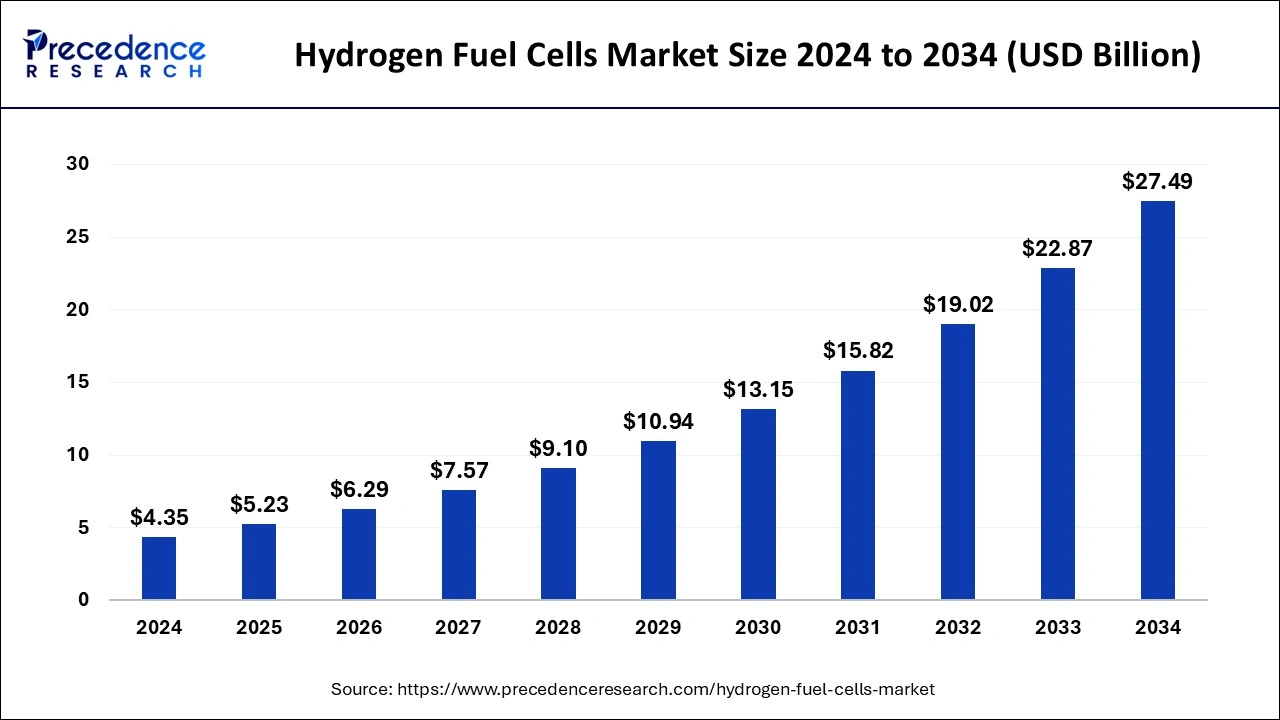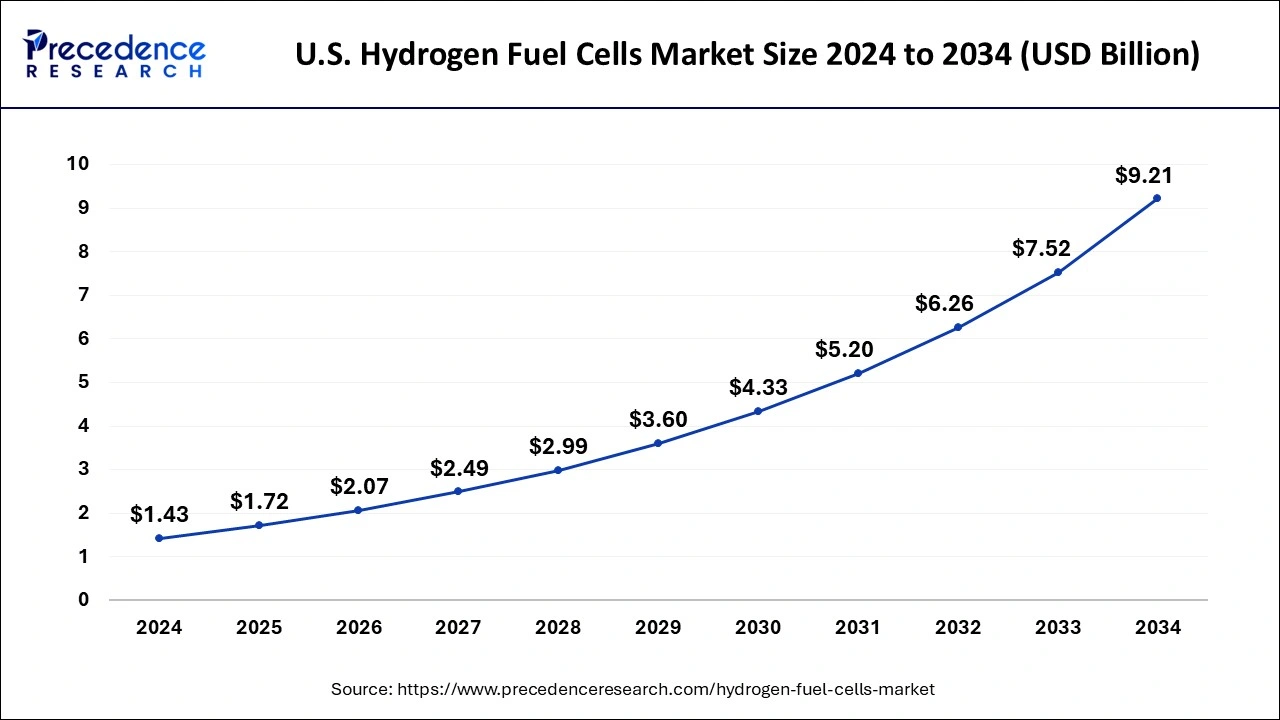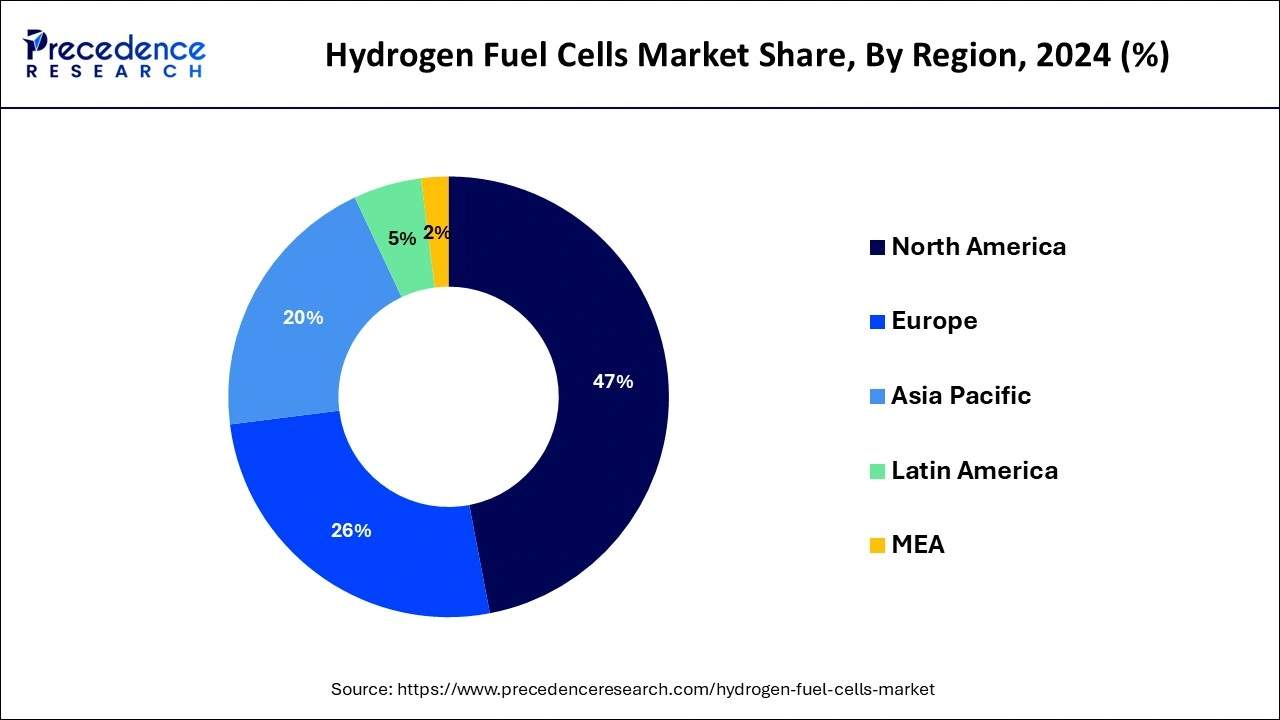December 2024
The global hydrogen fuel cells market size is calculated at USD 5.23 billion in 2025 and is forecasted to reach around USD 27.49 billion by 2034, accelerating at a CAGR of 20.24% from 2025 to 2034. The North America hydrogen fuel cells market size surpassed USD 2.04 billion in 2024 and is expanding at a CAGR of 20.40% during the forecast period. The market sizing and forecasts are revenue-based (USD Million/Billion), with 2024 as the base year.
The global hydrogen fuel cells market size was estimated at USD 4.35 billion in 2024 and is anticipated to reach around USD 27.49 billion by 2034, expanding at a CAGR of 20.24% from 2025 to 2034.

The emergence of AI is transforming the market. AI helps in optimizing the design and performance of hydrogen fuel cells. Predictive maintenance capabilities of AI identify potential failures in cells, reducing downtime and maintenance costs. Moreover, AI improves the production and distribution of hydrogen fuel cells by automating manufacturing processes and reducing errors.
The U.S. hydrogen fuel cells market size was evaluated at USD 1.43 billion in 2024 and is predicted to be worth around USD 9.21 billion by 2034, rising at a CAGR of 20.47% from 2025 to 2034.

North America dominated the global hydrogen fuel cells market with the largest market share of 47% in 2024. The fuel cell deployments in North American countries have been aided by research and development programs, as well as incentives and subsidies provided by government for fuel cell-based vehicles, as well as funding and expenditure by governments, which have pushed the use of fuel cell and hydrogen technologies in the North America region.

Asia-Pacific, on the other hand, is expected to develop at the fastest rate during the forecast period. The region’s expanding population and rising disposable income are lifting up the demand for energy. Furthermore, the region’s rapidly growing economies are also the world’s leading polluters. The hydrogen fuel cells have been found as the best alternative to other conventional fossil fuel energy sources for reducing carbon emissions and efficiently providing energy needs.
| Report Coverage | Details |
| Market Size in 2025 | USD 5.23 Billion |
| Market Size by 2034 | USD 27.49 Billion |
| Growth Rate from 2025 to 2034 | CAGR of 20.24% |
| Largest Market | North America |
| Base Year | 2024 |
| Forecast Period | 2025 to 2034 |
| Segments Covered | Technology, Application, End User, Region |
| Regions Covered | North America, Europe, Asia-Pacific, Latin America, and Middle East & Africa |
In 2024, the proton exchange membrane fuel cells segment dominated the market for hydrogen fuel cells. The widespread use of proton exchange membrane fuel cells in fixed, transit, and portable applications has resulted in a sizable market share.
In 2024, the solid oxide fuel cell segment will be the fastest growing segment of the hydrogen fuel cell market. Because solid oxide fuel cells can operate at high temperatures, expensive catalysts such as ruthenium are no longer required. The most common application for solid oxide fuel cells is in stationary applications.
In 2024, the stationary segment dominated the hydrogen fuel cells market. The stationary segment is expected to become the most popular application during the forecast period. Because of factors such as high efficiency and the ability to use a variety of fuels, the stationary application segment is expected to grow.
The transportation sector, on the other hand, is expected to grow at the fastest rate in the coming years. The transportation application segment is expected to grow at arapid pace during the forecast period due to rising demand for hydrogen fuel cell automobiles and hydrogen fuel cell powered forklifts. Furthermore, the industry is expected to expand as a result of increased research and development activities in developed and developing countries to produce hydrogen-powered hybrid vehicles.
The global market for hydrogen fuel cells is highly fragmented, with only a few firms competing with each other. However, due to the market’s competitiveness, the number of new companies is likely to enter the hydrogen fuel cells market in the near future is expected to increase. The leading organizations engage in research and development in order to stay competitive and produce new products.
By Technology
By Application
By End User
By Geography
For inquiries regarding discounts, bulk purchases, or customization requests, please contact us at sales@precedenceresearch.com
No cookie-cutter, only authentic analysis – take the 1st step to become a Precedence Research client
December 2024
January 2025
January 2025
January 2025